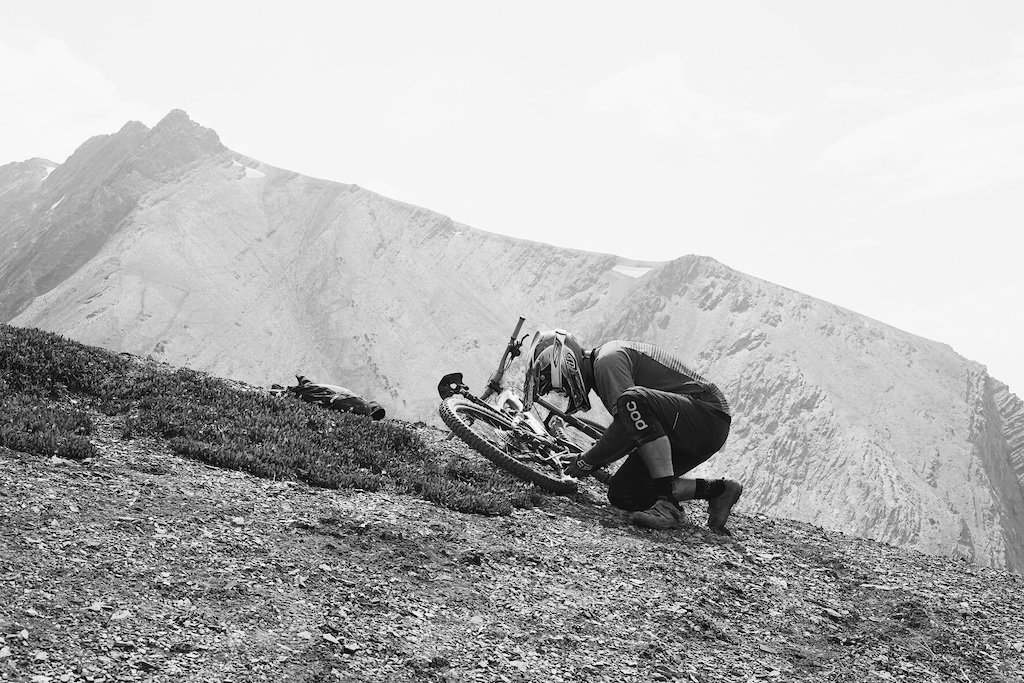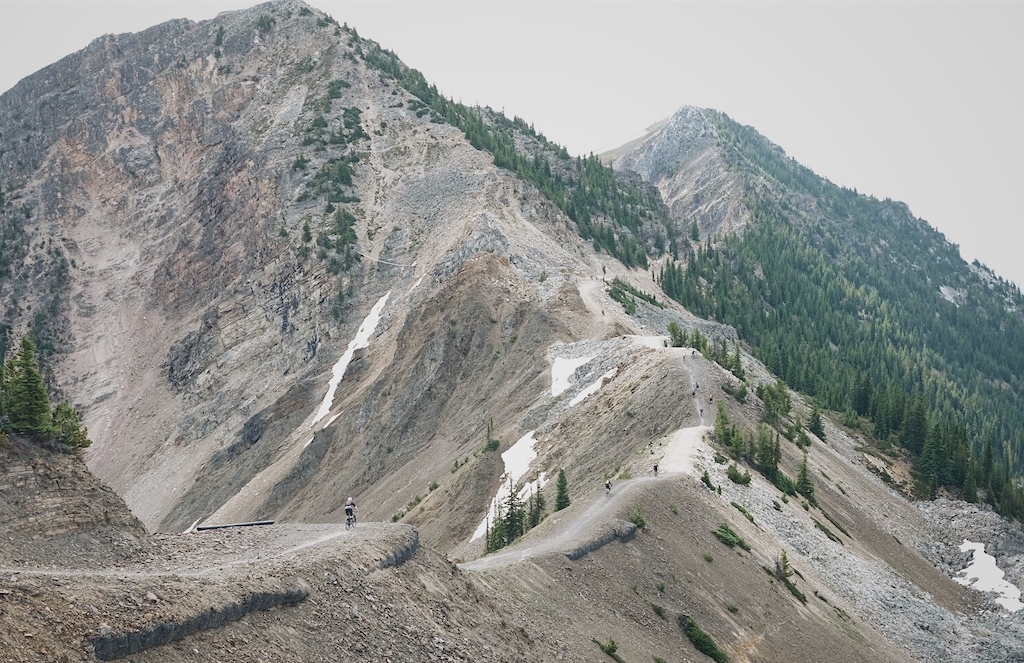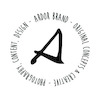Tackling the Trans B.C. with a Stages Power Meter
A couple of months ago I wrote about my preparation for the Trans B.C. using a Stages power meter, their new Links software and Dash head unit. The process of training with power was new to me and while the program was easy enough to try and follow along, I didn’t really know what all of the numbers meant and whether I was actually ready for the event. After discussing my numbers with Stages in-house coach, Ben Sharp, I felt more confident in my preparation. Six days on the bike, riding trails you’ve never seen in terrain somewhat unfamiliar to you can be pretty daunting, but the excitement of riding for a week far outweighed the nerves around survival.
Things were a little rough arriving in Fernie for the kickoff to the event. After giving it everything for the last training sessions, followed by a couple of days of minimal activity, it seemed my body wasn’t quite sure what was going on. Thankfully the very first liaison of the event started with a chairlift that bumped riders up roughly three-quarters of the elevation. Once off the chair the event really started and while it took a moment for the legs to wake up, things got going well and it felt good to be riding again after a few days off.
With no-one around us knowing what the first stage entailed, we all put our heads down and got the initial liaison of the week over with. It turns out the first stage set the tone for the following six days perfectly, as riders ripped through the woods of the Fernie Ski Resort, into the bike park and back to the bottom. Steep, loose, and at times rough, best describe the first stage and it’s a theme that continued for the week, with trails regularly featuring two of the three, or all three.
Having no idea how it was going to feel as the week went I opted to play it safe and keep output minimal, with our group choosing to cruise up the climbs as we made our way through the 41km opening day. Megan, the race organizer, had mentioned that there were a couple of longer transitions that would take “40 minutes” and as the week progressed riders eventually learned that Megan really likes the timeframe of 40 minutes, with many of the transitions slated with this often taking double the time or more to complete. Towards the latter half of the week, the heckling and #40minutes hashtag were thrown about but it never went beyond some good laughs.

The scramble up to the top of Mount Goldie at Panorama was unreal and a special one for the memory bank.
After the large first day, how good I felt waking up on day two was surprising—I was tired, for sure, but definitely ready to get on with the day, which involved a shuttle to Panorama Ski Resort. The day started off with a scramble up Mount Goldie and while a number of us thought it was great, there were murmurings from participants that wanted to ride their bikes—I guess they lost their sense of adventure en route to B.C.? Needless to say, we had been training to ride bikes, and for myself, were it not for all the hiking and walking done through the off-season in B.C and Australia (thanks in part to two high energy dogs), it’s likely I would have sympathized with them more. It was more than worthwhile, though, with the first stage of the day starting from the very top of the mountain, with insane views and a heck of a lot of vertical to descend.
As the week progressed the body grew more tired and any semblance of explosive power began to wane considerably. With consistent days of 30+km, the exception being the final day in Revelstoke, the amount of riding had taken its toll. In the end, I found that although I had only been training with the Stages system for four weeks proper, it did help, and I found my baseline to be quite solid. Having that solid base meant that I could rely on it to help me through the long days. Powering down a stage was no longer an option by day three or four, as I hadn’t had enough time building that sort of stamina to recover, but I felt that it was possible to spin all day, each day, and was happy to do so. Once the event finished I found myself eager to continue on knowing that I was able to continue spinning at an average pace for what seemed like ages.
With the final day complete I tallied up the stats. In six days the Stages Dash had recorded a total of 21 hours in the saddle amounting to 198km, 9,303m of elevation gain and 13,750m of descending! My TSB (Training Stress Balance), which essentially shows the state your body is in, was down to -67.9, indicating that I was quite fatigued. This, for me, is the most interesting part of training with power. The very real numbers and the ability to inform a user of their energy levels etc.—removing much of the perceived fatigue or effort is really intriguing.
Kudos to Megan, the Fearless Race Organizer
I’ve done a number of events in North America over the years, from local $2 races to EWS events in Canada and the US, but I’ve never had a race organizer continually push the comfort levels of the participants the way that Megan likes to, both in terms of skills on the bike, and dealing with exposure and hard to get to locations. After talking with some folks that know Megan it became clear that not only is this the way she likes to ride herself, but she seems to thrive on pushing others through similar challenges, and everyone couldn’t thank her enough.
From the scramble up above Panorama, clambering across knife-edge ridges and dealing with crazy exposure in Golden, riding brand new lines down through the wildest terrain imaginable and giving riders a chance to rally down Mt. 7's challenging Psychosis track, and everything in between, Megan doesn't appear to be afraid of making her racers work for it. The result is a bunch of memories that no-one will ever forget, a deep desire to return for whatever wild idea she creates in 2018, and a massive amount of respect for her. The standing ovation which lasted minutes at the presentation ceremony on the final night should be enough to show the gratitude that all participants have for Megan—she's a bloody legend.
Post Race Feels
At the end of the event I was tired, no doubt, but wasn’t as flogged as I had assumed and that was surprising. Better judging water and calorie intake was part of this for sure and has improved over the years (I sucked at it in the past, massively) which was no doubt a large component in being able to keep going. It still took seven days for my TSB to get back to zero, indicating that my body was hammered, regardless of how much better I felt than I thought I would. Being aware of the TSB was very interesting and I reckon this alone is worthy of training with power.
Unfortunately, or fortunately, depending on how one looks at it, I was pinned from the final day of the event until just recently and hadn’t been riding much at all. The original plan was to take a few days off the bike then do some gentle rides based on the Stages Link plan, followed by a resit of the power test to see what had happened to my FTP (Functional Threshold Power). As it turned out none of this was possible but once riding again, post-Crankworx, I was surprised by the numbers.

The view from the patio that we ended the week on. Not bad for sitting back with a beer and some food while sharing stories.
The first rides weren’t intended to be punishing, I was just happy to be out on the bike again. Nevertheless, after the first trail ride, the Stages system fired over an email that noted a new FTP of 399. Reluctant to believe it, I ignored the number—the ride had felt like a real struggle—so the FTP in the Stages Link program was left at my previously recorded 316. The next ride was much of the same, we rode at a good, steady clip but were by no means trying to hurt ourselves. After that ride, another alert of a new FTP, this time at 395 was fired over. Still reluctant, I wondered if something was wrong with my power meter and ignored again.
The next ride the same thing happened, only this time it registered 429. I almost accepted it just because, but chose not to and instead decided to wait for another ride, after triple checking everything was running smoothly. That next ride a more intense perceived effort was put in, feeling it more on the trail than the previous ones. Returning home another alert was received, this time claiming that I had pushed a 441 FTP. At this point an email to the folks at Stages was sent to ask if this was legitimate—I was in disbelief, especially after a month of not being on a bike at all.

Day four looking over Golden as nature put on a show with the early morning light. It made the tough work getting to the first stage of the day that much easier to deal with.
After further research and discussion, it became clear that these new numbers just couldn’t be—they were putting me in the category of an exceptional domestic pro road racer (at worst), a world-class international pro road rider or, in the case of the final number, completely off the chart. Definitely not even close to possible on any of these counts! Further discussions with the team at Stages led us to find that the power meter in my cranks had begun to act up, resulting in my power numbers since the Trans B.C., and potentially some toward the end, being unreliable.
Regardless of the numbers from the meter, things felt good. Regular rides seemed relatively effortless and pushing quite a bit harder than I’m used to was required if anything was going to continue to build on it, but in all honesty, it was good to be back to riding without watching numbers. However, what was really great was the confidence on the trail. The Trans B.C. put us on difficult terrain every day with zero knowledge of what was around the next bend or over the next rise, and that translated to a new, even calmer state on the trails around home, and even those that are not. Having that base built during the preparation for Trans B.C. contributed to that confidence, enabling ample fitness to get through the big days and keep riding as close as possible to normal, regardless of what was put in front of me—it helped in a way that I would never have anticipated.

Racers and some staff got to know these buses really well over the course of the week. Four out of the six mornings saw everyone pile into these and drive between 1.5 and 3 hours to the next destination.
Recognition of the benefits of being able to see a legitimate tally for the rides being completed and measuring output every inch of the way has been a great attribute to have and pay attention to, despite not wanting to chase numbers. This can still be done in a similar fashion to switching on the Strava iPhone app. does—flick the switch at the start of the ride and once finished, turn it off and check out the details. Although not chasing zones or anything similar, the information gathered still makes for some interesting data and being able to see exactly how tired you are is very interesting.
Stages are yet to receive the cranks back to see what has happened to them, but with the aggressive riding encountered on mountain bikes, they highly recommend their PMP program. The program is their Power Meter Protection plan and it covers any rider who has a problem due to a rock strike or other damage to the meter. It’s essentially a crash replacement/insurance program for their crank-based power meters.
For anyone with intentions of taking part in the Trans B.C for 2018 learn from one mistake a number of us made this year. Hit the gym for some strength training too. The hands and arms took the brunt of abuse during the event thanks to Megan’s incredibly tough and physical trail choice. Hand and arm fatigue was a major problem on longer, sustained descents. Time to get back in the gym, I guess.

Beaverhead Peak daring us to carry on along the exposed ridge and up it. We didn't, with the most challenging descending transition of the week starting day three beginning right at the base of it.
Author Info:
Must Read This Week
[UPDATED] Final Elite XC Results & Overall Standings from the Mairiporã XC World Cup 2024
42288 views
42288 views
Sign Up for the Pinkbike Newsletter - All the Biggest, Most Interesting Stories in your Inbox
PB Newsletter Signup





Stan the Dentist: "Oh boy, my FTP numbers were all over the charts!"
Biker Bob: "Zzzzzzzz"
#theITlife